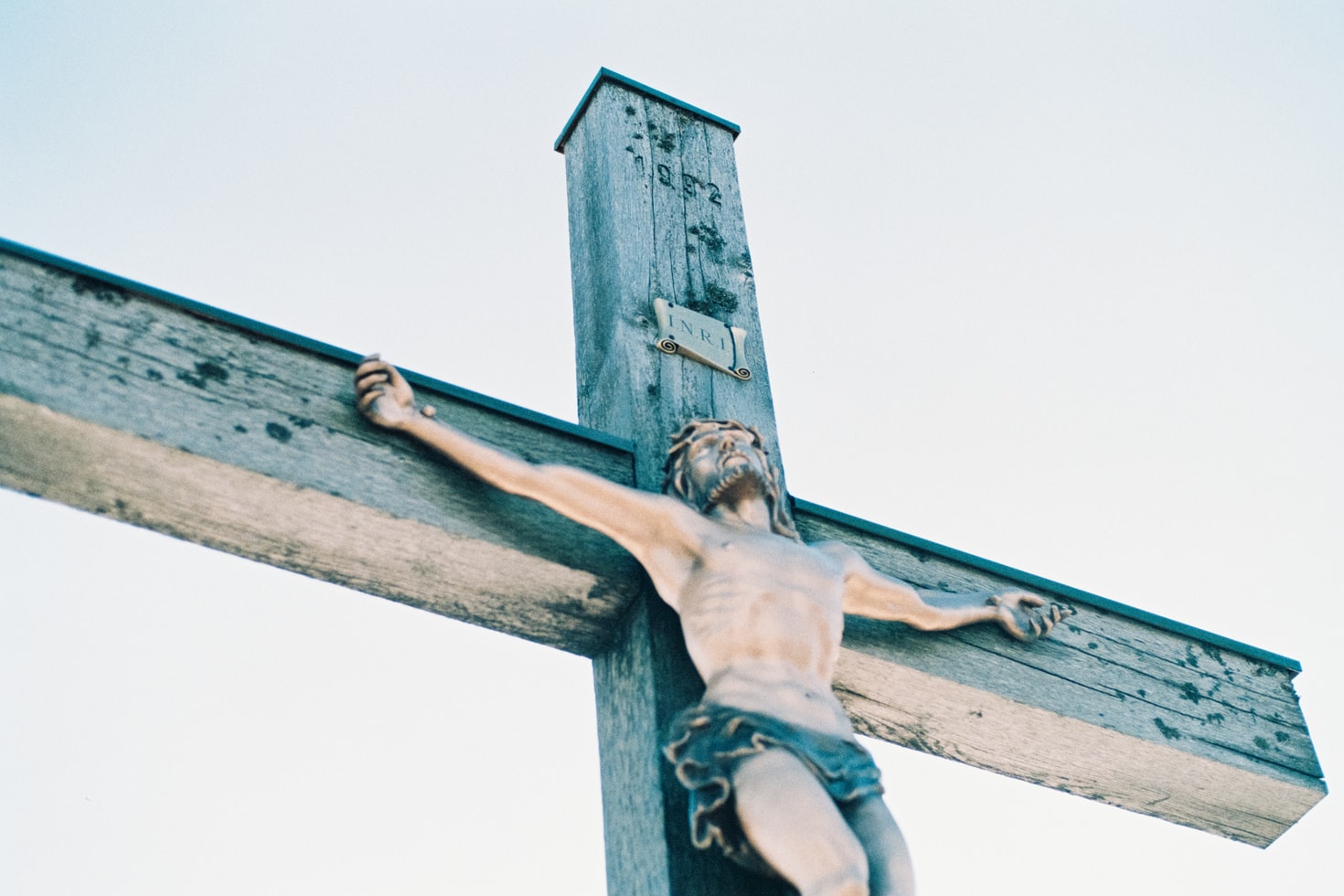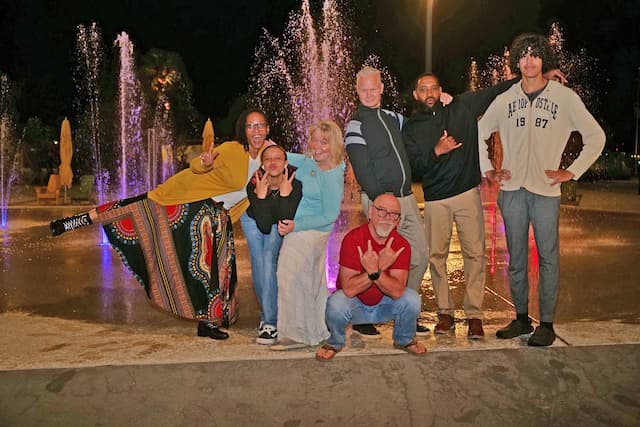Risen and reigning (Matthew 28:1-10)

God’s government arrived with an empty tomb.
I doubt any of Jesus’ followers could sleep after his crucifixion. The men kept a low profile, fearing for their lives. If the leader had been crucified, what would they do to his followers? Their best chance was blending into the crowds returning to Galilee when the festival was over.
The women had watched from a distance (27:55). Those horror scenes would haunt them. Sleepless in Jerusalem, they rose while darkness still enveloped them to make their way to the only thing they had left: a tomb. The tombs of the prophets enshrined Jerusalem’s tragedies.
What they found
This tomb had been disturbed. It was no longer the final resting place they had watched as Jesus was buried (27:61). The tomb’s mouth gaped open. The stone was rolled to one side. And someone was sitting on the stone: not a gardener or a guard, a messenger in a glistening white uniform.
He was terrifying. Everything had been shaken by his approach, like a seismic quake or a sonic boom. Armed guards lay on the ground like dead soldiers in a conflict zone. This did not feel like a safe place to be.
The white messenger spoke, reassuring them that he understood why they were there. They had come to pay their respect to a crucified man. That sounded crazy, but he seemed to know Jesus. He knew about the injustice. He was not on the killers’ side. He was on a mission to deliver a message. To them!
A higher authority had overruled Jesus’ execution. Jesus had been raised from the dead. Could they recall Jesus talking about this?
They’d come to see the tomb, and the messenger showed them it was empty. He pointed to the slab where Jesus’ corpse had been laid to rest. There was no body lying in state. The slab was empty. The tomb was empty.
How do you process something like that? It’s terrifying, confusing, astounding, beyond imagining. But the messenger hasn’t stopped talking. There’s an urgency in his tone. He’s commanding them to carry his message to the others without delay.
The messenger checks they’ve got it straight. Two points:
- Jesus is raised from the dead.
- Jesus is going ahead of them to Galilee, to meet them there.
With that, the heavenly messenger says his work is done. He has delivered his message. It’s now in the hands of earthly messengers.
Not dead. Raised to life. The alliance of Jewish leaders and gentile imperial forces to assassinate God’s anointed had failed. Heaven overruled his condemnation and execution. He’s back … not with a vengeance, but with authority to lead the earth as a kingdom of heaven.
Jesus had talked about this: … shepherd struck … flock scattered, but after I have risen I will go ahead of you into Galilee (26:31-32). The messenger wasn’t just saying that Jesus would head down the road ahead of them: he was saying that Jesus was going ahead of them to lead them as a shepherd does. He’s alive, and guiding them under his shepherdship.
Gospel messengers
Obedient to the heavenly commission, the Galilean women leave the empty tomb, feeling terrified and elated. They are the first gospel messengers, carrying the good news that Jesus is alive and Jesus is reigning — raised from the dead, and leading as our Heaven-appointed shepherd (Lord). Those two points are the gospel in the New Testament (e.g. Romans 10:9).
And then, as they set off to fulfil their commission, they discover that the Shepherd doesn’t leave us to do this on our own. He was right there with them. Literally.
What did they feel when they saw Jesus alive? They wanted to touch him, to know he was physically there. They wanted to honour him as the heaven-anointed leader, raised from the tomb to the throne. These feelings merged in a single action: kneeling before their Lord and reaching out to take hold of his feet.
And Jesus affirmed them as his gospel messengers. The days when he appointed only males to address the twelve tribes of Israel are over. This is a new world under a resurrected king. Women and men together are his gospel messengers. The Lord gives his message to whomever he finds available.
Jesus affirms the message they are to carry, with a fresh twist: Go and tell my brothers to head off to Galilee and meet me there. The resurrected king calls his people his family. He hinted at this previously (e.g. 12:50, where he explicitly includes sisters and brothers). But now, a whole new humanity is raised in the resurrected Lord, sharing a place in the family of the Father (John 20:17) through the leadership of our Lord (Hebrews 2:11-17).
Why Galilee?
I don’t think Jesus led them to Galilee just because they wanted to go home. After all the blood, sweat, and tears Jesus invested in his final trip to Jerusalem, he wasn’t giving up on the capital, but it was not the limit of his authority.
Do you recall how Matthew introduced us to Galilee of the gentiles? The land of the northern tribes was the first to be lost to the nations. Matthew drew our attention to Isaiah’s promise that that the land lost to foreign domination through war would come back from the dead: for those living in the shadow of death, a light has dawned (Isaiah 9:1-2 in Matthew 4:12-16).
That morning had dawned. The tomb of God’s anointed was empty. For the people living under the shadow of death, the light had finally come. That included the ethnic descendants of Israel and the people of the nations that had dominated them for seven centuries. The anointed son of David had received the heavenly kingship over the whole earth — all authority in heaven and on earth … commanding the nations (28:18-19).
Conclusion
This is how God’s Christ received the kingdom, raised from tomb to throne.
This is how God deals with the injustice on earth, removing the power of death by giving life.
This is how the good news of God’s reign transforms earth into a kingdom of heaven.
This is what Matthew has been describing all along, the good news of the kingdom.
He is risen, and he is reigning. That’s the good news that transforms the world.
The text
Matthew 28:1-10 (my translation, compare NIV)
1 As the week faded and another one dawned, Mary Magdalene and the other Mary went to see the tomb.
2 And look! There was a great shaking, for an angel of the Lord descended from heaven, approached, rolled away the stone, and was sitting on it. 3 His appearance was like lightening, and his clothing white like snow. 4 The guards were so shaken with fear that they became like the dead.
5 Speaking to the women, the angel said, “Don’t be afraid. I know you’re looking for Jesus who was crucified. 6 He is not here. He was raised, just as he said. Here, see the place where he was laid to rest. 7 Go quickly and tell his followers, “‘He was raised from the dead, and see: he’s leading you to Galilee where you will meet him.’ See, I gave you the message!”
8 Leaving the tomb quickly with fear and great joy, they ran to give the message to his followers. 9 And look: Jesus met them and greeted them with joy. They went right up to him, took hold of is feet, and knelt before him. 10 Then Jesus says, “Don’t be afraid. Go tell my brothers to head off to Galilee and meet me there.”
What others are saying
Michael J. Wilkins, Matthew, NIVAC (Grand Rapids, MI: Zondervan, 2004), 959–960:
As Jesus hung upon the cross for those three long hours, the bright light went out. The shadow of death claimed the land — not just in Galilee of the Gentiles, but throughout the earth. The bright hope of salvation that Jesus announced seemed to be extinguished.
But the light wasn’t extinguished. At the dawn of the new week, the bright light of the sun, the brilliant light of the angel, and the glorious light of the risen Savior greeted the world. And the blessed women disciples can only draw near, hold tight to Jesus’ feet, and worship him. …
The light of the gospel of the kingdom of heaven was not extinguished with Jesus’ death. His resurrection has overcome the darkness, and the light of his life lived through his disciples is going throughout the world. This is the message Matthew presents in his final chapter.
N. T. Wright, The Resurrection of the Son of God, (London: SPCK, 2003), 731:
The resurrection constitutes Jesus as the world’s true sovereign, the ‘son of god’ who claims absolute allegiance from everyone and everything within creation. He is the start of the creator’s new world: its pilot project, indeed its pilot.
Related posts
- What difference does the resurrection make?
- Strike the shepherd (Zech 13:7-9)
- Light in dark places (Mt 4:12-17)
- Questions take you deeper (Eph 2)
(Photo by Allen Browne, 2014.)
Seeking to understand Jesus in the terms he chose to describe himself: son of man (his identity), and kingdom of God (his mission). Riverview Church, Perth, Western Australia
View all posts by Allen Browne





